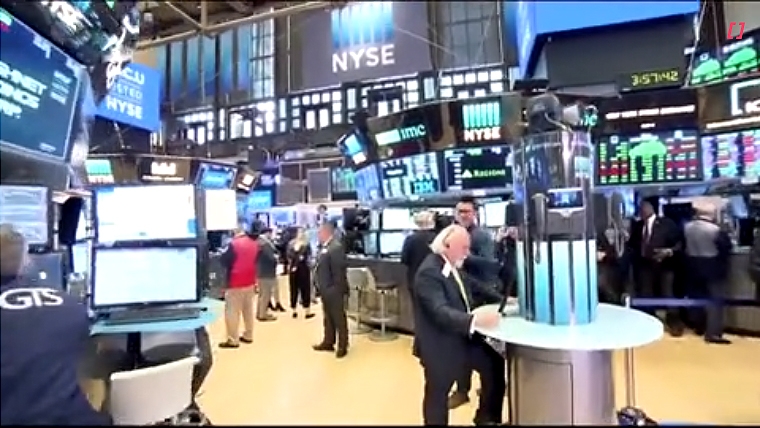
Risk sentiment is higher on trade war de-escalation with a US and UK trade “framework” and President Trump providing positive signals on this weekend’s US-China trade talks and telling everyone to buy stocks. US equities are up over 1% and Treasury yields are up 10-13bps. Hopes for trade deals have supported the USD across the board and the NZD has fallen to 0.59. GBP has fallen less after the BoE delivered a hawkish cut.
As floated during the NZ trading day yesterday, President Trump announced a trade framework with the UK, the first so-called trade deal in a long list of countries that are lined up. However, there are many unresolved issues, and final details would be negotiated over coming weeks. The deal includes the 10% baseline tariff on most goods remaining while tariffs on steel and aluminium will fall from 25% to zero. The UK will be able to export 100,000 cars a year to the US at a 10% tariff (down from 27.5%). There will be “reciprocal” market access on beef. The UK will remove the tariff on US ethanol and committed to import more US goods, including Boeing planes.
President Trump said that the 10% baseline tariff is probably the lowest end for a tariff. This is consistent with the market consensus that after all the deals are done, most countries will still face at least a 10% baseline tariff, even for the good guys like countries that have a trade deficit with the US, making higher tariffs a permanent feature of the landscape.
President Trump made positive comments regarding this weekend’s US-China trade talks in Switzerland between Bessent/Greer from the US side and Vice Premier He Lifeng on China’s side. He said, “I think it’s going to be substantive” and he said he would consider lowering the 145% tariff on China, “…right now you can’t get any higher. It's at 145% so we know it’s coming down. I think we’re going to have a very good relationship”. Trump talked up trade deals and tax cuts and said, “you better go out and buy stocks now”.
Investors got the memo and drove up US equities after that comment and the S&P500 is up 1.3% with an hour of trading left in the session, a solid performance against the backdrop of higher US Treasury yields. The 2-year rate is up 12bps to 3.89% and the 10-year rate is up 10bps to 4.37%. In the aftermath of the Fed’s policy update yesterday – where it left policy unchanged and Chair Powell signalled patience in deciding when to cut rates again – the market prices little chance of a cut at the next meeting in June and the first full cut is not priced until September.
European equities showed a modest gain, with the Euro Stoxx 600 index up 0.4% while the UK FTSE100 closed down 0.3%, so not showing any love from the so-called trade deal, although a more hawkish than expected policy update by the Bank of England probably didn’t help.
The BoE cut its policy rate by 25bps to 4.25%, as expected, but it was a 5-2-2 split decision, with 2 dissents to leave rates unchanged and 2 voting for a larger 50bps cut. Guidance was maintained of “a gradual and careful approach to the further withdrawal of monetary policy restraint remains appropriate”.
That two members wanted unchanged rates made this a more hawkish decision than expected and the market pared back pricing for further cuts, with just over two full cuts now priced over the remainder of the year (56bps), or about 14bps less compared to yesterday. Pill and Mann preferred to hold rates due to the recent easing in financial conditions and concerns about inflationary persistence due to structural supply problems in the UK.
The combination of the trade deal and BoE decision supported GBP, but against the backdrop of a broadly stronger USD, with the DXY index up 1% for the day. GBP has fallen the least over the past 24 hours, down 0.5% to 1.3260. The NZD and AUD are down 0.9-1% over the past 24 hours. After lifting above 0.5970 yesterday afternoon after the US-UK trade deal was floated, the NZD has fallen to close to 0.59. The AUD has slipped below 0.64 and NZD/AUD has nudged down to 0.9225.
Against the backdrop of higher global rates and higher risk sentiment, JPY has been the worst performer, with USD/JPY approaching 146 and NZD/JPY back over 86. NZD/EUR is up slightly to 0.5260.
Economic data releases didn’t move the dial. US initial jobless claims fell 13k last week to 228k, confirming that the spike up the previous week was due to seasonal factors. The annualised 0.8% fall in US productivity in Q1 reflected more noise than signal, including the plunge in net exports in addition to the usual volatility in measurement, with the annual average figure of 2.2% more reflective of productivity gains.
Yesterday, NZ rates were lower across the curve, following global rates. Both NZGB and swap yields closed down 1-4bps. There was good support for the weekly bond tender, with bid-cover ratios of 3½-4 times and all bonds issued just below prevailing mids.
On the economic calendar today are releases on Japan wages, China trade and Canada’s employment report, while China inflation data are published tomorrow.

We welcome your comments below. If you are not already registered, please register to comment.
Remember we welcome robust, respectful and insightful debate. We don't welcome abusive or defamatory comments and will de-register those repeatedly making such comments. Our current comment policy is here.